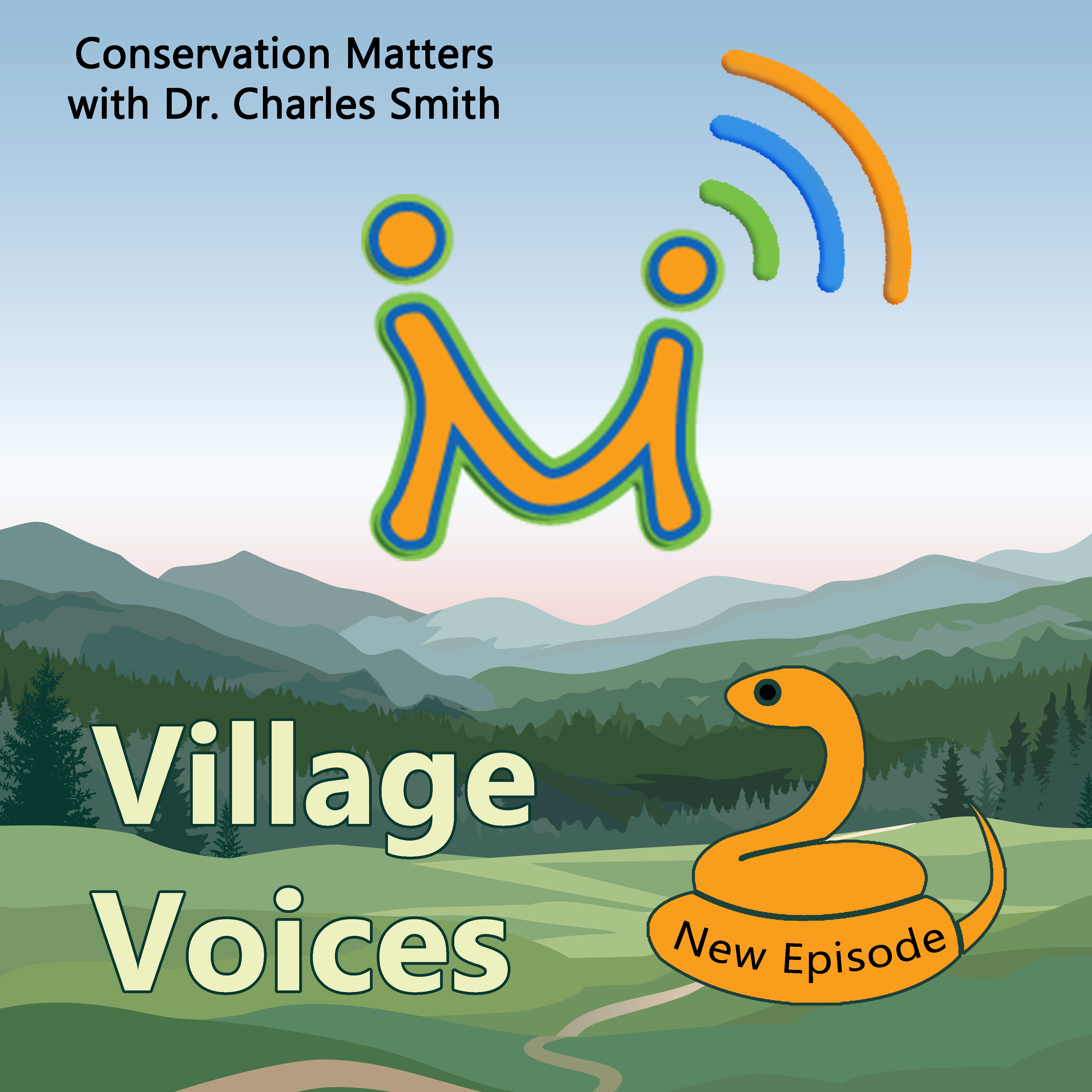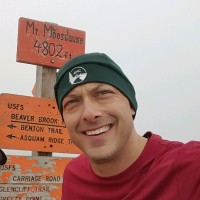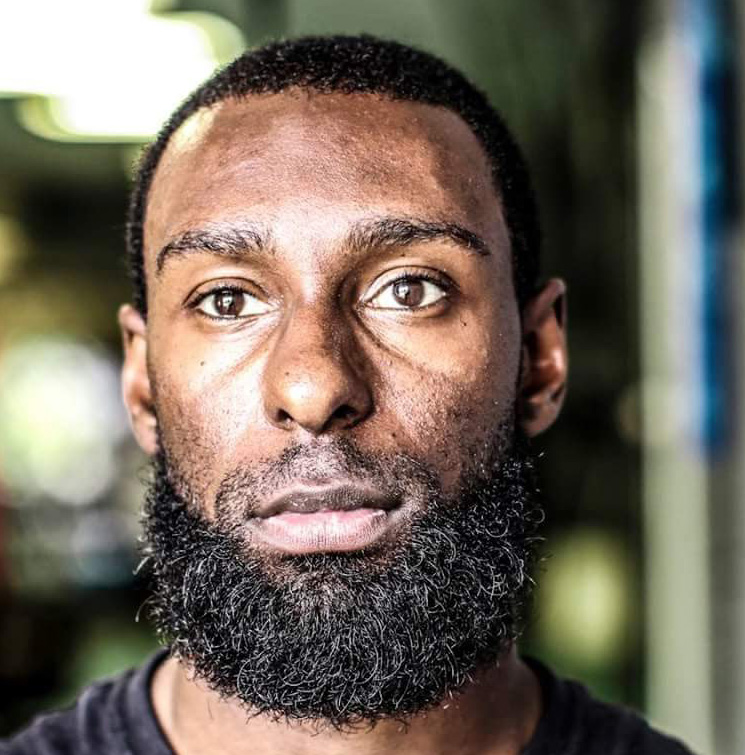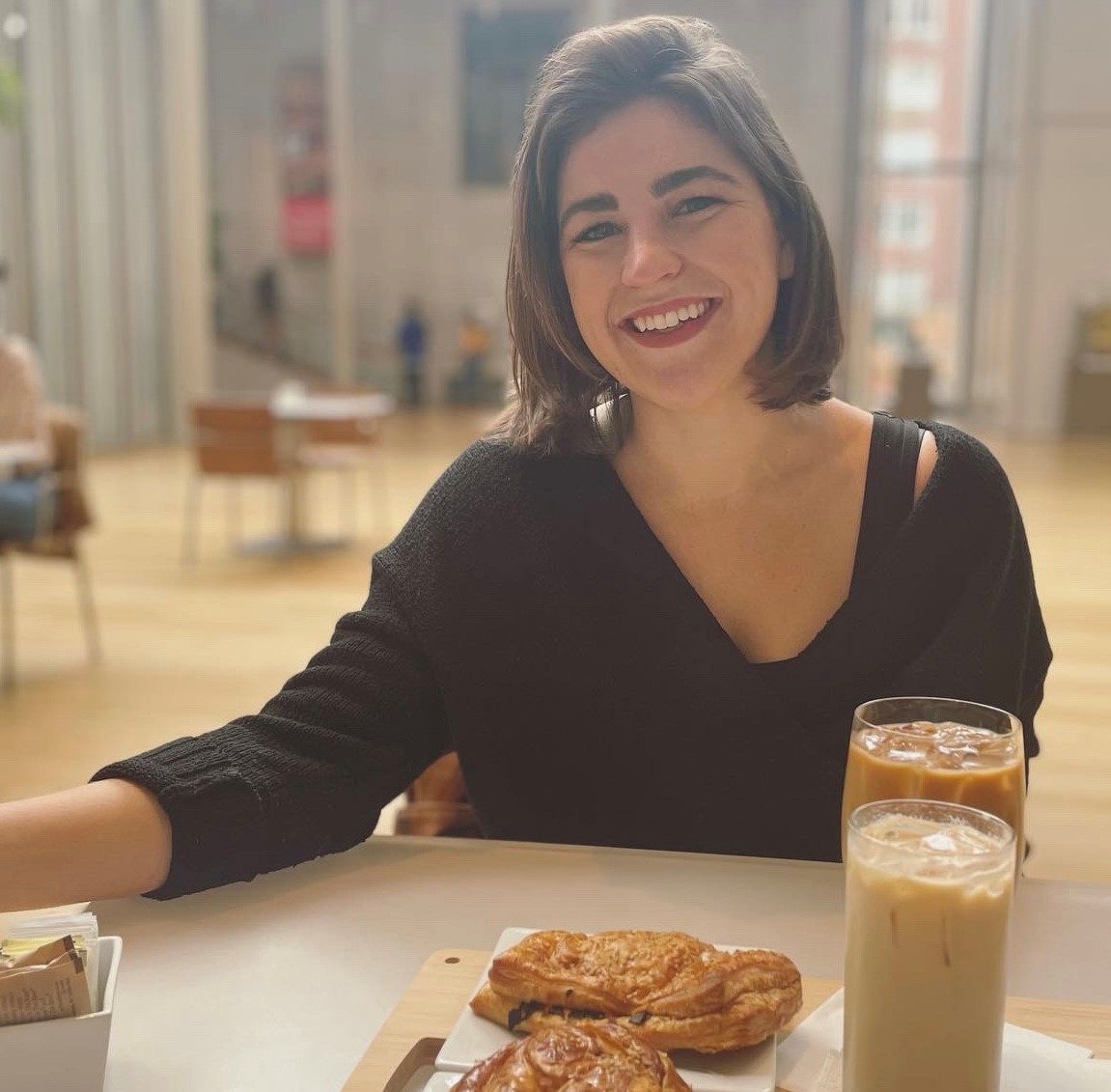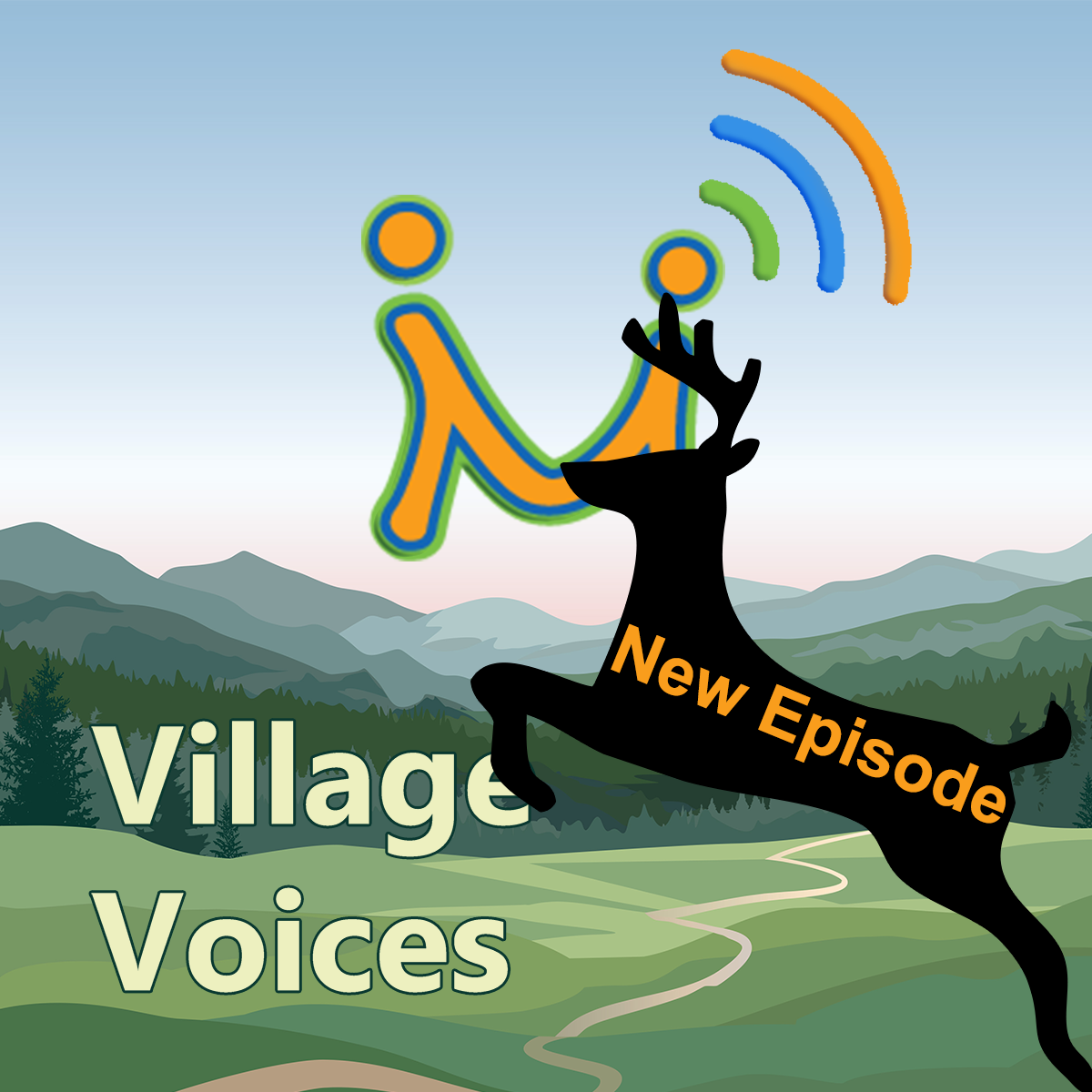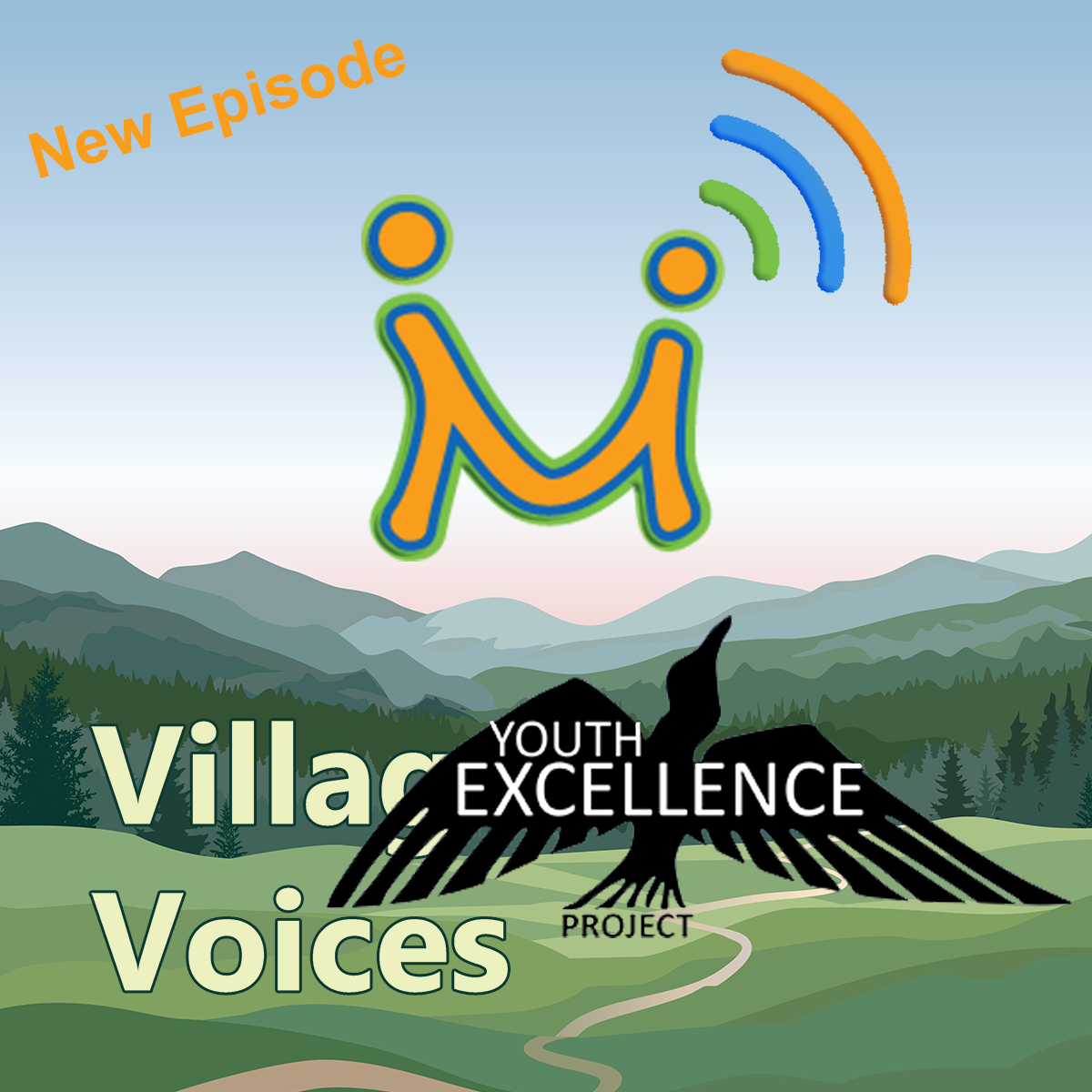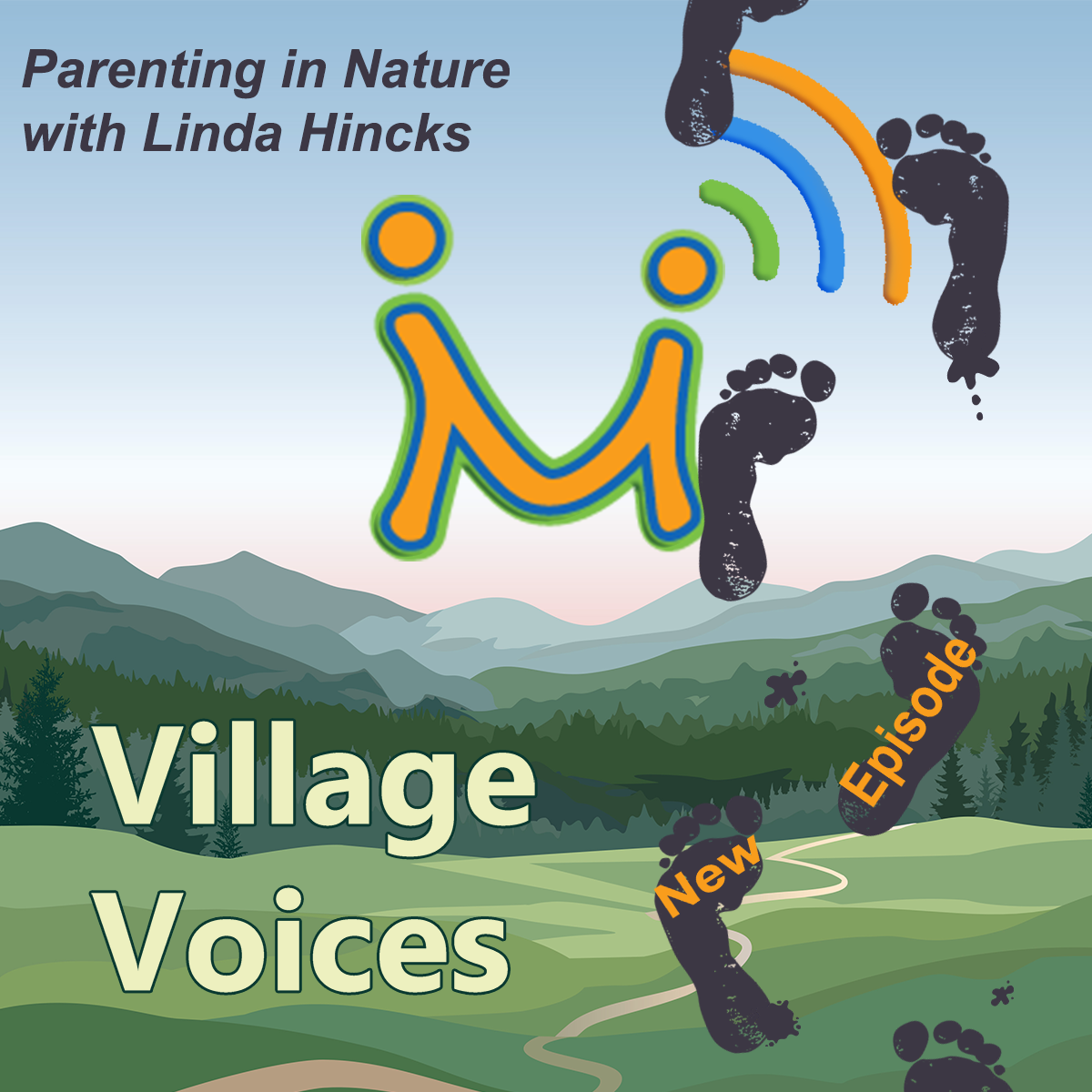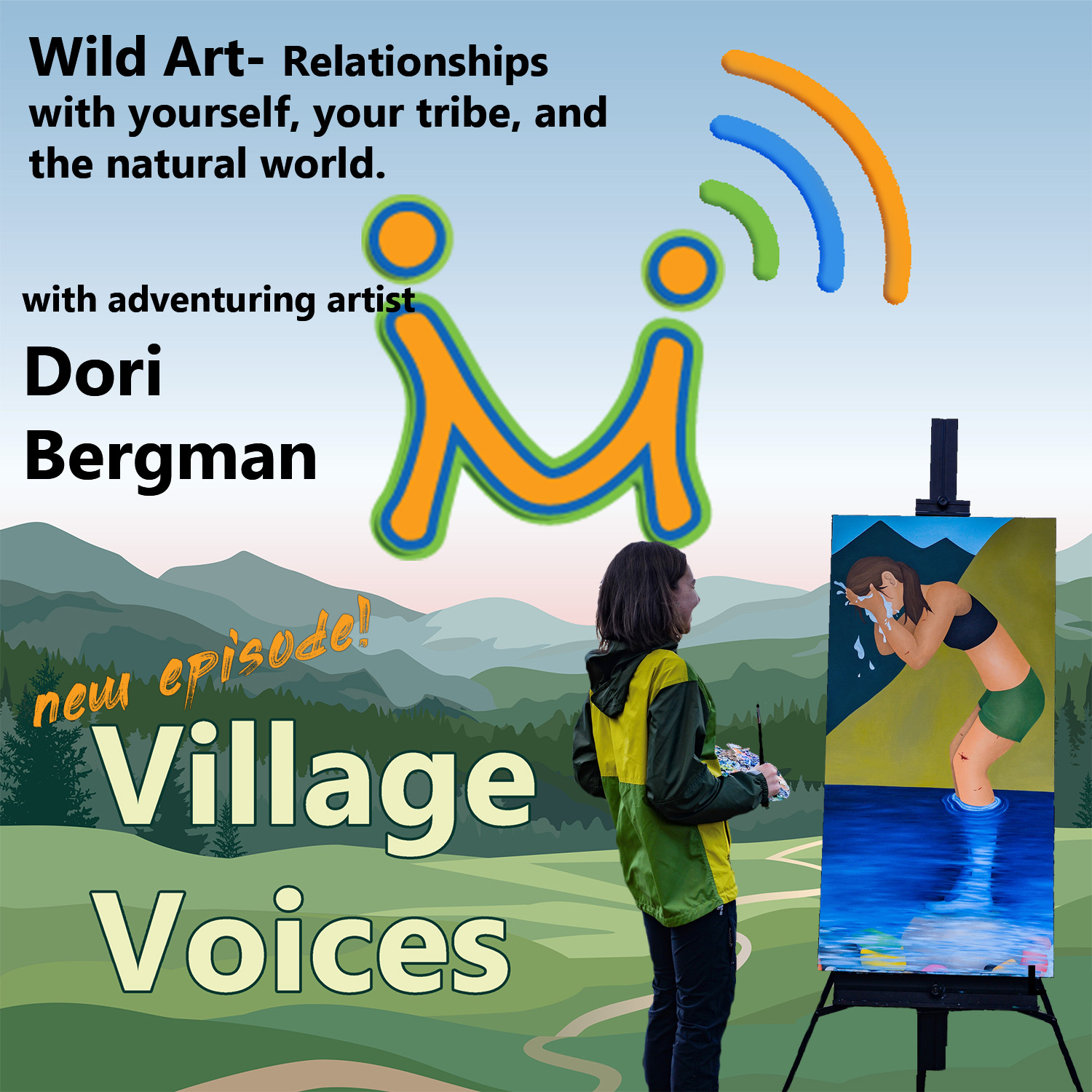Speaker 0 00:00:00 I'm guessing nine years old, my mother made a huge mistake. Sure. It's a mistake that she later grew to regret because she paid the price for it in the years after that. But for whatever reason, whatever motivated her, she decided that, Hey, I think my kid might like a pack.
Speaker 1 00:00:23 So
Speaker 0 00:00:23 What she did was she had a friend who in the backyard had found a or steak, oh boy, she brought that guard or state to me and said, I brought you this.
Speaker 1 00:00:36 Hello, everyone, Jay Highland here from project emo. Again, welcome back to our village voices podcast. That was Dr. Charles Chuck Smith. Dr. Smith is an associate professor of biology at Wofford college in Spartanburg, South Carolina, and the director of the comprehensive Institute in a team of fellow researchers have been studying the impact of human created climate change, the drought conditions and its impact on copperhead snakes. At first met Chuck when we were both at the university of Connecticut and I had the absolute pleasure of an adventure with him when we were out on a reservoir in Connecticut tracking and inspecting some of his research subjects at the time, one of my favorite Denisons of the region, the copperhead snake in this episode of village voices, we're going to not only catch up with Chuck and learn a little bit about his current work, but also explore what experience has helped create the spark of a young scientific mind and send a child off in the long journey to become a scientist. As part of our conservation matters episodes, we'll talk with scientists, engineers, or esters educators, science, communicators, and all sorts of folks in the village to find out just how our youth evolve to conservation focused professionals.
Speaker 1 00:01:44 So, hi, Chuck, it's great to connect with you again and thank you so much for taking some time to chat with me about your work and what experiences outdoors may have helped create that drive in you to be a lifelong learner researcher, and then want to share some of that research and connect it to conservation. So thank you very much for taking some time with me today.
Speaker 0 00:02:01 Thanks Jay. I appreciate it. It's good to
Speaker 1 00:02:03 Hear from you again. Yeah, it's been too long. It's been too long. We'll have to, we'll have to stay, stay in touch some more. Yeah. So we're going to talk a little bit about, um, you know, this kind of journey you've had and hopefully you can share some of that with our, our villagers and our listeners to help them understand a little bit about what it takes to evolve a scientist.
Speaker 0 00:02:24 Great. I look forward to it.
Speaker 1 00:02:28 So Chuck, can you share with us a bit about your background and your current research and why you focused so much of your passion on snakes, particularly venomous copperheads?
Speaker 0 00:02:38 My background is kind of interesting because this is not, I mean, I wanted to work with animals that was early on. That was something that I started with very early on, but my plan was to go in a different direction. Um, I actually in high school, volunteered a nature center and got to work there every weekend with all kinds of animals, polar bears and mountain lions. And that was my direction. I was going to go into zoo work. I was going to be a zookeeper. In fact, my goal was, uh, um, kind of goal-driven sewing, kind of get something I want to do and work towards that. But my goal was even early on that by the time I'm 30 years old, I'm going to be the curator of herpetology at a major zoo. Oh, that's brilliant. And he had everything I did was kind of focused on that.
Speaker 0 00:03:31 So the first logical thing would be to somehow get involved with animals. So beyond just hiking through the woods and looking for turtles, and I don't know, I had 10 woodchucks and pet skunks, and I had to everything in the house when I said my mom later regretted, you know, bringing me a garnish, Nate, she really regretted it because the basement was full of all. It was a menagerie down there. So I was, that was my goal, 30 years old and volunteered in a nature center and got a lot of great experience. And then from there, uh, I got a real position, a real zookeeper job in the reptile house at the Buffalo Sue. And I spent four years there and I was awesome because I got to work with really cool space crocodilians and Fijians, and let's still focused on this time of 30 years old.
Speaker 0 00:04:24 I'm going to be a curator. And then, uh, from there, I, I jumped to riverbank suit down here in South Carolina. So this is actually my third time to live in this state. Um, and I was a senior keeper there in the reptile house, which was another step towards that goal. And from there, I went to the desert museum in Arizona, beautiful place. I would choose a beautiful place to Tucson. And I was there for a number of years and closing in on my 30th birthday. And, um, I actually interviewed for a position at a major zoo. It came in number two oh for the curator position. And, um, that was like on the Eve of my birthday. And the reason I did not get the position, it was because I did not have a college degree. So then I refocus myself and go, okay, my next goal is to get a college degree. I had a high school diploma. And so that meant at 30 years old, I'm going back, going back as a freshmen in college, which I did. I had a young child at that time. Uh, I had a full-time job at that time and I was going to become a full-time student. And I did that. And, um, it took me two extra semesters because along those other responsibilities, but I got my undergraduate degree. And along the way, I somehow at some point said, this is really cool. Science is awesome. I'm really liking this.
Speaker 1 00:06:02 Chuck went on to get his undergraduate degree at the university of South Carolina and tended to go back to working, but he followed the wisdom of an advisor and applied to, and was awarded a very competitive national science foundation, graduate research fellowship. This meant his graduate education was paid for. And he ended up pursuing those studies at the university of Connecticut, where he started that research. He told me that his history working with venomous snakes led him to research the comprehensive here in Connecticut. It was during this work that I initially met Chuck at Yukon and saw firsthand some of the exciting research he was doing and certainly saw his passion for this species.
Speaker 0 00:06:43 I mean, there, they do very interesting things. Um, and you know, when you get to know them and you get to know them by studying them, they're individuals, you don't see that you think of snakes as being, uh, this little hardwired, automaton that just driven by selection, but no they're individuals, they actually have personalities, which you don't really associate with snakes, but when you study them intensely, when you get to really know the individuals, they're different. Yeah. There is, there's different as people are, you know, their personalities, their temperaments, they're all very different than because there are different, you start to get attached to them. Right. So, yeah, that's how I ended up in this. This is weird life that I have
Speaker 1 00:07:36 Just a, just a different, just a different member of the family, right?
Speaker 0 00:07:40 Yeah, yeah, yeah. You do. You, you know, as a scientist, you try not to do that. Right. This animal has a number and it doesn't have a name and you know, it's one of my study subjects. No, I know this animal. I have known as animal for 10 years. You know, it has a name I'm sorry, totally
Speaker 1 00:07:59 Has a name.
Speaker 0 00:08:00 We try to stay on bias, but it's hard when you see them every single day and you watch what they do and you know, it's hard not to become somewhat attached to each individual.
Speaker 1 00:08:10 Absolutely. And I think, especially in terms of like, you know, conservation and conservation messaging for the broader community, the broader, you know, human society, I think some ways that personalization is very helpful because it kind of creates the honesty of the personality of these animals species that, that we really need to take some protective measures for.
Speaker 0 00:08:33 Yeah. And when you really get to know them, when you really study them intensely, they, they do have a social structure. We don't associate that with steaks and more and more data is coming out more and more science is coming out. That shows they have a social structure, they have relationships with one another, they one another, um, they recognize individuals, they know their relatives. Um, and so there is this sort of subtle, underlying, almost secretive social interaction structure that's going on within these animals. It's going on in rattlesnakes, it's, it's going on. And in copperheads, um, they protect their offspring. They defend their really that's historically traditionally not thought of as something that's snakes are capable of what they, they certainly are. And it's pretty obvious when you, when you really look close at them. Yeah.
Speaker 1 00:09:33 You know, when you think about what the broader concept of how we kind of, as society has framed snakes and a lot of reptiles, they tend to just think of them as you know, this is a collective group. And into your point earlier, just to kind of like automatons, right. To just, you know, it's just a Darwinian push towards survival, which of course exists, but there's so much more, there's a rich tapestry behind that, that we don't necessarily ascribe to
Speaker 0 00:10:00 There absolutely is. There absolutely is. And so, you know, the more that you understand that the more you come to appreciate, um, the complexity of, of these animals, they are not just hard-wired and, you know, selected to like strike in defense or strike for pray. And no, there's a lot, there's a lot more complexity underlying what they're doing. And a lot more variation between individuals that's, that's a parent or that traditionally been thought,
Speaker 1 00:10:39 We'll be back in a minute to hear more about Chuck and how his research led to some interesting climate findings where we here at project EMA would like to take a moment and extend our gratitude to a very special partner who helped to make all of this possible
Speaker 1 00:10:53 Project. Emo wouldn't be where it is today without the generous support of pro bono partnership, their team of experts helped us incorporate and gain charitable 5 0 1 C3 status at every step of the way. The volunteers at pro bono partnership offered guidance and diligent counsel to help us grow in ways we never could have achieved on our own pro bono partnership is celebrating 25 years of providing free legal help to nonprofits in Connecticut, New York and New Jersey founded on the belief that strengthening nonprofits will make stronger communities. The partnership's mission is to provide nonprofits with the legal advice and educational resources. They need to build capacity, reduce risk, and enhance programming with confidence. The partnership services were never more critical than during the last two years when the global pandemic, but the shifting requirements for nonprofits and a greater need for services within communities, the partnership and its 1400 volunteer attorneys were there to help providing 38,000 hours of free legal assistance to nearly 900 nonprofits valued at $19 million in 2020 robo. And our partnership is also a nonprofit organization and your support is what makes their mission possible. Learn
[email protected]. Back in 2019, Chuck and a team of his colleagues published an article in a prestigious journal nature about climate change caused droughts and the impact on copperhead snakes. It sounded very much like the copperhead populations they studied were really at risk due to a fairly complex interplay of ecosystem issues. I asked Chuck to shed some insight into that.
Speaker 0 00:12:33 This was an artifact sort of a benefit of actually studying these animals. Long-term we have been studying them and by these animals, I mean the same population. So we know these animals intimately for close to 20 years, and we collect data on reproduction and diet and movement and blood samples for genetics genomics. And we noticed that, oh, reproduction is varying over years for that. I mean, some years we would find a lot of reproductive pregnant females. Okay. I mean they're everywhere. And then other years we would struggle to find just a single one. Wow. And we wondered if this has something to do with changing environmental conditions. So we went and looked at climate data and Connecticut had experienced a pretty severe, pretty prolonged drought. And when you line the climate data up with the reproductive data, it lines up perfectly in that in years with normal or excessive rain.
Speaker 0 00:13:46 Typically the following year, there's a lot of reproduction and in years that are very dry with extremely dry reproduction in these animals fails. And by that immediately, don't find a lot of reproductive females, any given year. We're guessing on average half the females are reproductive reproducing. Half of the females are pregnant, but there's a clear trend that during wet periods is a lot of reproduction during very dry periods. There's very little reproduction. And so what's happening is as the drought continues on fewer and fewer females are reproducing. And then you have to wonder, and at the very end at the extremist of the drought, there are no reproductive females, as far as we tell them, nobody's reproducing. So you have to wonder like what's the connection between reproduction and climate rainfall. And it seems to be in the most logical explanation is food resources. These guys feed on amphibians, they feed on small mammals and the success of those food animals depends on water.
Speaker 0 00:15:01 So in dry years you don't have a lot of amphibian reproduction. You don't have food for the snakes. And that means the following year. They don't have the energy, the resources to devote to reproduction. So they don't reproduce. Wow. What we found interesting. And this is sort of the take home message of that study was that when you think about effects of climate change, you tend to think that they're going to be gradual and accumulating and slow over time. You don't think that it's going to be immediate, but clearly, you know, over a relatively short period of time, just a few years of drying, the results are dramatic and, uh, immediate during those dry periods, reproduction stops. The other interesting thing is do those effects, uh, continue on once that drought has subsided. And you might think that, yeah, we have zero reproduction than this year and those effects are going to linger for a long time.
Speaker 0 00:16:05 And it turns out that when the drought ended, when the drought broke and started to rain, again, the response of the animals to rebound to the animals was almost immediate. The following year, the amphibians ramped up, there were a lot of food. And the year after that reproduction returned to pre drought levels. So the effects can be rapid dramatic, and immediate. Now had that drought went on even longer. I think we go beyond they're going to lose reproduction. And I think we're going to start to see or would start to see increases in mortality because now the is not just necessary for reproduction. The food resources are necessary just to maintain the population. So I think at a population level and even longer, drought would start to have some serious impacts on the viability, the population. Wow.
Speaker 1 00:17:02 I mean, there's just such a complex interplay going on there of, of all of the animals in that ecological system that, you know, we see the sounds like you saw that they bounced back a bit, but that doesn't necessarily mean that, that they're going to sustain longterm if there's this really extreme change in their, their inbox.
Speaker 0 00:17:22 Oh, sure. And I think the first thing to go is the first thing we saw go, which is reproduction. Okay. Right. That's the first, the first sort of evidence. So the first life history trait, that's going to suffer as reproduction. And then after that, if it continues on, then you're going to start to see increases in mortality where animals simply don't have the resources, not only to reproduce, but just to survive.
Speaker 1 00:17:45 Sure. And if they don't, if the population itself is not large enough to sustain environmental adversity, then we really see some population risk for an entire species. Right.
Speaker 0 00:17:58 And then the population we study is already, um, I wouldn't say necessarily at risk, but there are stressors. There it is bounded by interstate highways. It is in a public area. Um, it is used for recreation. And so there's already limits to that population. You can't have animals coming in from outside the population migrating in because they're bounded by interstates. So you have that already existing, it's a limited population. And then you add on top of it, changes in the environment. And then you've now layered on another stressor on top of that. And so they'll, they, there are limits to how many stressors you can subject the population to before it starts to suffer.
Speaker 1 00:18:49 Do you work in the conservation world and have stories to share? Is that a yes. I couldn't hear you. Maybe that's not how these podcasts, well, if you said, yes, we'd like to hear from you as part of an ongoing discussion within the project emo village. We'd like to hear the conservation stories of industry pros near and far for conservation matters episodes. We'd like to learn from you and to your tremendous tales of thrilling her Oaks, stop by our website or email
[email protected] that's project. I M O dot O R G
Speaker 1 00:19:34 For all of the villagers, following along out there, take a moment and think about a spark of passion you had as a child. What was that moment like? Did it create a ripple effect of emotion and drive that still carries with you today? Well, with the amount of passion and longevity that he obviously brings to his research, one can imagine that a younger Chuck Smith must've spent some time in the woods exploring, turning over rocks, digging around in the mud in the lake. I asked him to help me understand what created that spark for him.
Speaker 0 00:20:09 Oh, I can go back in my old photographs and there is one and I it's stamped with a date cause it's an old Polaroid. It was 1968, which will put me at eight years old, which also give away my age, but I'm holding a painted turtle in my driveway. And my mother took that photograph. And I know by that time I was already into animals. So it started very early. I had a golden guide, you know, those small little field guides and I had that memorized and I would stare at the photos and that was probably, oh gosh, seven years old, six years old. This was back in the day. Things have changed obviously where an eight year old could wander off from home and go up over the hill to the little swampy pond over the top of the hill, by the factory and spend the day there just by themselves, wandering around through the muck and the rocks and the logs. And, and, uh, it was not a concern. And that's what I would do. I would disappear for hours on end. And you know, my parents knew where I was. I was up at the swamp and looking at bullfrogs, looking at like, you know, it doesn't matter what it could be a plant. I was fascinated with cat nine tails. You know, I was just fascinated with those things and it didn't matter if it was outdoors, I was hooked on it.
Speaker 1 00:21:41 It's amazing how a children's nature guide and a heaping pile of curiosity leads to a veterans in the woods, shouldering a pack and take into a trail on a swamp nearby, small hands, clasping, walking sticks and binoculars coming back home covered in dirt and grass stains, probably in need of a bandaid, but too hungry and excited to care as time goes on though, often to our teenagers, leave that behind the pressures of school and being cool or focused on our social lives and wildlife all too often to retreat from the woods Smith.
Speaker 0 00:22:10 And then in the later teen years, years, and I had my neighborhood friends and we would do neighborhood friend things, but they were into muscle cars when everybody got their driver's license favor, that that was the thing, right? Muscle cars. That was not my thing. Now I had, when I got my first car, I had a beatable Ford Mustang, the three different colors on it. Cause it was all pieced together because I didn't want to mess my time or what little money I had in my car. I want to invest it in like being out there in 96. I remember at one point a friend, sort of a friend of mine, he goes like, what are you going to do for work? You got to, is this what you're going to do? It's just like, you can't make a living doing this. You know, this is what I'm going to do.
Speaker 0 00:23:01 And then I volunteered at the nature center and volunteer, doesn't get paid. Here you go. Like, you're not getting paid for this. Like, this is not what it's about for me. It's not about making money. It's about doing what I love to do. And this is what I love to do. And, um, I don't know whatever it became in that friendship. But, um, this is sorta where I ended up, it was a path that I ran down and just still out there doing basically the same thing. It's just turning over rocks and looking under logs and just finding animals. And yeah, if it's a snake, that's awesome. If it's a, a bald Eagle flying over like, oh my God, it's a faulty. You still get that same charge. Um, but yeah, it goes back a long, long way.
Speaker 1 00:23:50 Despite all the pressures of teen life, those years do present some unique opportunities as we grow and mature. So to our chances to really immerse ourselves in an understanding of the natural world and gain some pretty critical life experiences, as we're given more and more responsibility, encouraging adolescents along these paths to discovery can make a huge difference. The nature center working in that nature center as a teenager, what was, what really kind of connected you to that specifically rather than just stomping out in the woods and kind of exploring what kind of really drew you in to the nature center as a place to study?
Speaker 0 00:24:24 So it was a nature center, but it had some really cool animals. Um, and I think it still exists. It's in Worcester was the mask. Um, they had polar bears, they had mountain lions podcast. They even had some venomous snakes. So the volunteers weren't even allowed in the room with us, but, um, they have a big reticulated Python and an American alligator. So I had the opportunity to help care for some, what I thought were really cool animals. And where else am I going to get to feed a polar bear or a polar bear enclosure? Wow. So that to me was amazing. Here I am, you know, I'm catching a bull for arcade because every turtle and I get to work with mountain lions and wolves, that's amazing. So it was, yeah, it was, it was a really good training in terms of, you know, working with somewhat exotic animals, but just getting exposed to all kinds of different animals. We had an elephant shrews. I don't know if you've ever seen them, but they're at the nature center and they were the most amazing little animal, a little snorkel like nose. And I would just sit there and like watch them for hours. This is the coolest thing I'd ever seen.
Speaker 1 00:25:48 Once we had a chance to look at his current work and reflect upon what childhood events helped to propel Chuck into the field of biology, spent some time exploring the larger concept of conservation. I wanted to know how the study of biological sciences informed conservation efforts, as it turns out, knowing biology and how organisms interact with in an ecosystem. It's absolutely critical protecting our natural.
Speaker 0 00:26:11 Well, if you're going to conserve something, you need to understand what it is you are conserving and you need to understand what outcome you desire in terms of what would it mean for a species to be conserved, right? And so you need to understand that you, you're not just conserving the species that you're interested in. Okay. Because what you're conserving is more than just the animal itself and its life history, because it is not a standalone entity because an exist in isolation or a vacuum, it exists at the intersection of a whole bunch of other things. It exists with its habitat. It exists with the other species that co-exist in that same area. Um, it exists in the context of the environment, the climate where it, where it's at, where it lives. And so you have to understand the intersection of all those, the interplay of all those different things and then determine is it all important or is just a little bit of it important?
Speaker 0 00:27:27 Okay. No, that's, that's really abstract, right. But if you're, for instance, talking about a, uh, a species of say, Montana rattlesnake that lives at high elevation, okay. You're, you're not just conserving that rattlesnake. You're also conserving the habitat itself, that area. And so when you're going to conserve the area, you need to know how much area I need to set aside and what sort of players in that habitat unnecessary, um, for the sustaining that say Montana rattlesnake, to do that, to understand all those intersections, everything that's intertwined, that's where the biology comes in, right? That's where I'm sure you're studying the animal you're interested in, but you also need to know the plants. You need to know the insects. You need to know the species that feeds on the species that feed on it. You need to know the annual or long-term cycles in the, in the climate, the hydrology, all of it it's. So it's, it's, it's, you're not just conserving the species, what you could be, but in order to do a properly, you need to think about holistically the whole thing. And then the question is how much of the whole thing do we need? And of course the more, the better, right? And, but the only way to know how much of the whole thing you need to use biology to understand what is in that whole thing,
Speaker 1 00:29:09 Chuck, then help me dive a bit more deeply into the concept of conservation. We turn back to the snake population. She studied in Connecticut and explore the nuances. We understand about a given animal species to make impactful conservation steps. And then we talked about a broader conservation concept. What value does societies place upon our wild cousins?
Speaker 0 00:29:31 I mean, it could be something as simple as, um, with our rattlesnake species that we want to conserve. You know, there, you know, there's a new England, right there. A hibernaculum there were places that all animals come to in the winter. The overwinter if you don't understand that, and you just set aside say a summer forging range, right. And you don't pay attention to the hibernaculum and you don't conserve that, then you're pretty much doing the population because that is an essential factor. That's absolutely necessary for the long-term existence of that population. Um, can they, so suppose it's not possible to conserve that, that then is it possible then to, uh, produce an artificial den, would snakes or rattlesnakes use that? Is it, can they actually shift to a different site? Is that even possible? The only way to answer those questions is through biology, through studying the biology of these animals. Um, and so that's sort of, you know, an example of one essential, absolutely essential component for the existence or the long-term existence. So a species, um, yeah, there are plenty of questions. We know nothing about where they use artificial hibernaculum can they move from one hibernaculum to another, if the one is not available, don't know the answers to that, but you know, the viability of that species in that area greatly depends on something. You have that.
Speaker 1 00:31:14 So, and we've focused a lot about, obviously your passion is it was a snakes comprehends, and we've just talked a little about, um, about rattlesnakes. And then I also have an affinity towards, to snakes as well. And so snakes, right? It's, uh, it's safe to say that both you and I have this affinity to our, to those cousins of ours, but that's not necessarily something shared by everybody because, you know, they let's be honest. They may not be the cuddliest members of our natural world. Right. It's easy to look at a Kitfox in a photograph and be like, Aw, that's just adorable. Not as easy for many people with, with, with a snake. So can you help us understand the role that snakes like copperheads play in their ecosystems and how critical they are to that?
Speaker 0 00:31:52 Sure. I mean, part of it, that's a two-part answer to me. And the first part is the obvious answer. You know, that the economic kind of reason why stakes are important because they control rotary populations and without them, and they consume so many roads a year and we'd be overrun with rats and, and you know, and that that's an obvious answer, right? Lost to crops because of rodent infestation, that couldn't be controlled by snakes, but the snakes aren't there. So now we have to use other means to control rodents. The other answer is not to me, not the economic one, it's the Katrin intrinsic answer, the intrinsic value that we associate with organisms. And that's harder to grasp. That's harder to sell, right? When you put a dollar amount on a value or something that's relatable, when you put a value onto something exclusive of any economic benefit, that's not relatable, but I would argue that everything, it has an intrinsic value in just its existence, that there's value.
Speaker 0 00:33:06 For instance, let me give you an example, unrelated to snakes. So gorillas, right. We could say that gorillas have some sort of economic value thus to us, there is a benefit in conserving gorilla populations. I would argue that that to me, the sheer fact that gorillas exists, although I may never, I hope to, but I may never see a gorilla in the wild. However, there is value in knowing that out there at this very moment, there are wild gorillas. I cannot put a dollar amount on that value to me, but to me that is valuable in knowing that, and I can say that with you name it, any species to me, there is value in knowing that somewhere right now. And I don't know what the weather is like in Connecticut, but it's entirely possible if it's warm, but there is a comprehended at my field site in Connecticut, basking in the sunshine.
Speaker 0 00:34:11 There's, there's a great value to me and knowing is that just the knowledge of that? So, um, yeah, in terms of conservation, the way to sort of traditionally to get action is through associated dollar benefit. Sure. Um, but, but I think, but I think if you can show people that there's a benefit in just something existing because it's all dollar benefits change, right? It's valuable one day may not be valuable another day, but that value is still there. If it's an intrinsic value. Now, the question is how do you get people to buy into that and higher, I think how you get people to buy into it ideally would be, you know, if I could lead tours to the field site in Connecticut and show people, the animals doing what they do in their natural habitat, but that's not practical, right? So maybe the other value is letting people get a glimpse inside the lives of these animals. Be it perhaps through a podcast describing, you know, the things you don't expect, these animals or any animal to do that surprising that's relatable or, um, you know, any way educational programs anyway, that can expose people to, uh, the complexity intricacies, uh, the, the things we share with whatever animal it is as sort of almost tugs at their heartstrings that they can connect with. Absolutely. So that's my, that's my long answer to a short question.
Speaker 1 00:36:04 So it seems that to engage in conservation efforts, there's a critical need to help society develop intrinsic value, animal species, stake, people like Chuck. And I can sometimes have an uphill battle sharing that affinity, what works, Brandon, it's all about,
Speaker 0 00:36:22 You know, maybe we're making a little progress and that some people will starting to think that these animals are, are kind of cool. Right? And the first reaction is not like, you know, that'd make a good hand, which is offering content that you see. Yes. But yeah, you're right. The fact is that there's plenty of research out there. Now that shows there are social relationships within populations of snakes. They, they know each other, they recognize each other. Um, moms will protect their kids and we've actually made the change, uh, to, you know, not calling them a snake widths or little comprehend. We call them pups, those moms and pops. And that's an intentional, that's intentional because, you know, we call other animal offspring pumps, they're furry, but it's the same scenario. It's a mother and her offspring. So we call them pups. Pups is more relatable and, you know, perhaps changing just the terminology might help to change people's attitudes because in fact, yes, moms do protect their pups and moms will protect the pups of other moms. Oh, wow.
Speaker 1 00:37:30 That's awesome.
Speaker 0 00:37:31 Yeah. They're related. Yeah, sure.
Speaker 1 00:37:33 Is absolutely brilliant. So Chuck, it sounds like there's quite a bit of work in passion that goes into a career as a biologist researcher and an educator, but it also sounds like there's a very large need for people to carry forward with that work, especially giving some of the dynamics that we're facing globally with climate change and, and habitat loss. Um, if you could, would you share some wisdom and advice for young conservationists and naturalists out there?
Speaker 0 00:38:06 Sure. Yeah. I'd be happy to. I think my first bit of advice slash counseling would be to realize that you are not alone. Um, again, I grew up with friends who were into muscle cars yet on this weirdo out there who just love animals and being outside. And it, the tendency is to feel like, am I the only one out here? My, the one weird one, I'd rather do this than mess with car insurance. Um, you're not the only one out there. There are plenty other people, um, young people who are equally passionate about this stuff and the challenges to connect with them, to find them out at back in the day. We didn't have social media. Now we do. So it's a lot easier to find people who are like-minded, who are passionate about the same thing. So find those people connect with those people, um, share your passion with those people and then find other people mentors, for instance, who have that passion as well.
Speaker 0 00:39:12 You can find them that, uh, nature centers, zoos, universities. I know, um, when somebody comes to me and just wants to talk about animals or snakes or research opportunity, even young junior high school, you know, or younger, I welcome that person in, you know, it's a kindred spirit to me. Um, that's me many, many years ago. So there are people out there and there are plenty of them who want to help you, who share those same interests, who share those same passions who want to make a difference and want to help you make a difference. So find the people connect with the people, seek out opportunities to, to get more experience, to be mentored by people that have been doing this for a number of years. That would be, uh, my number one bit of advice. My number two bit of advice would be, um, unlike the path I took focus on your education.
Speaker 0 00:40:20 Yeah. It's going to be important. I remember to go and I don't need Spanish. I don't need French math. What? I don't need that either. I just need to be outside. Well, later on, I needed to catch up and if I could go back and change things, I probably wouldn't have done it in a logical order. You know, education onward. I did the onward part than the education and then the onward part again. So sure. It may not seem important now and things you're studying, uh, may seem sort of arbitrary and not really relevant or necessary, but they will be yes. Math. I wish I took back early education that I really didn't focus on. Boy. I wish I had it later on. Yeah. So find like-minded people connect with like-minded people find yourself some mentors and focus on your education. Yeah. Um, because it's a lot easier to do it when you're young, then to do it. Like I did, it was go back and redo it when you're older. Yeah. Right.
Speaker 1 00:41:25 Yeah. So about you, how can our listeners learn more about you and your research?
Speaker 0 00:41:30 Um, probably easiest to go to Google, be Google scholar. And, um, you can just type in my name and the research will come up. Uh, you can find me on, uh, my Wofford page. Um, I'm at Wofford college in Spartanburg, South Carolina. And so, uh, you can find to be there or, uh, Facebook follow me on Facebook. I don't have, I don't have a Twitter and on Instagram I do, but I don't use any of it, but just, you know, Charles Smith at Yukon. And if you search for that, you'll, you'll find me on, on Facebook alone. Um, as of late, I'm rarely on there. Cause it's just so many other things to do.
Speaker 1 00:42:13 Right. There's there's an X to go research.
Speaker 0 00:42:16 Yeah. There's other, well, it's getting to be winter, so we're winding down, but there's still tons of things to do. Yeah.
Speaker 1 00:42:21 Yes. That's awesome. Chuggy it was simply excellent to catch up with you after all these years. Um, I still think back fondly to that time that we were out there collecting copperhead subjects that many, many moons ago, and it was just an absolute blast and to participate in that entire,
Speaker 0 00:42:39 I remember Jay and I remember specifically one of the places we were, it was
Speaker 1 00:42:48 Just a
Speaker 0 00:42:48 Beautiful, it's a great site that I met at. Uh, we were, we were tagging animals and that one cliff side where the pregnant females hang out as a wonderful day
Speaker 1 00:43:01 All the time. And I'm like, I keep me, then I just need to go back and just take a hike night, maybe next summer when, uh, when, when we're likely to see some out there again, I might, I might just head back out and take a walk and well, yeah.
Speaker 0 00:43:11 And if you do all, um, I'm planning on going back up there, you know, we've, we've microchip the animals, so microchips don't have batteries. That's awesome. Just like a new dog. So if there are any animals still there, um, that have microchips, we will know it and we could go back and look in their history and go at it. We've been following in animals since 2003. That is so brilliant. Yeah. So that's one of my goals is to get back out there and then see who's still around kind of reconnect with the old gang.
Speaker 1 00:43:41 That is awesome. And you are always welcome back up here. And again, thank you so much for sharing with us today, your time, your experiences and your stories and your passion for the
Speaker 0 00:43:52 Texture. And we appreciate, I appreciate it. It's been a pleasure.
Speaker 1 00:43:59 That's it for this episode, villagers, thank each of you for tuning in and sharing your time with the village today. As we heard from our friend, Dr. Chuck Smith, about the importance of the youthful spark and its power to create the passion for science. If you like this episode, subscribe, if you really liked this episode, share it out and head on over to our
[email protected], to learn more about our charitable efforts to create conservation stewards through adventure in nature education, each of our episodes, and all of our efforts at project emo are supported by the generosity of listeners. Just like you.
